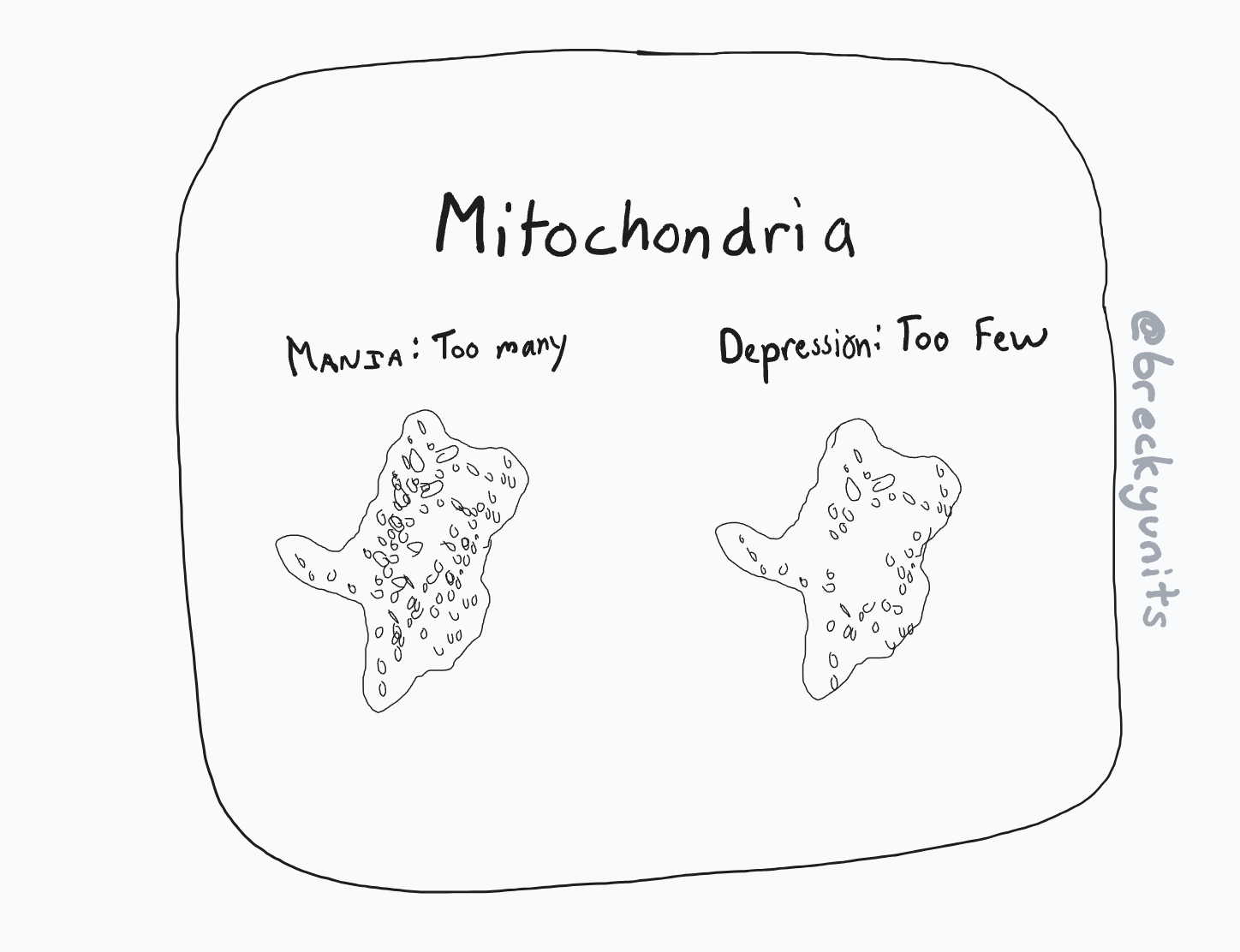
The model proposed here. Mania is too much mitochondria; depression too little. We predict it is possible to detect mood state from optical images of certain cells and counting mitochondrial volume.
Mania is too much mitochondria; depression too little.
Mitolevel is mitochondrial volume divided by cell volume (ML = M/C).
Mitolevel varies by cell type.
The mitolevels in certain cell types will be strong predictors of current system wide mood state.
Mania is elevated mitolevels and depression is depressed mitolevels.
Individuals who have experienced mania frequently report a feeling of quickening or acceleration, which matches this model as self-reproducing mitochondria change population exponentially over time.
Individuals who experience severe depression take a long time to recover, which matches a model where the cell is depleted of mitochondria (likely from dead mitochondria from resource exhausition during a manic episode) preventing the restoration of a healthy mitolevel.
Mitochondrial populations change much more gradually than substance levels in the bloodstream, which explains why mania is described as a "sustained high" and why depression can't be immediately "snapped out of".
Predictions
- Abundant lab evidence. Someone will discover a human cell type whereby one can reliably and abundantly predict mood-energy state of the whole person simply by measuring the mitolevels of a cell sample.
- At-home mitolevel tests. Someone will organize a large number of people in different mood-energy states to contribute to a large dataset of microscopic images of mitochondria from various cell types and then, using this reference, cheap at-home tests of mitolevels using simple staining, consumer microscopes, and machine assisted counting will be developed.
- Millions cured. High fat, low glucose diets will cause stabler mitolevels and radically reduce episodes of mania and severe depression
- A Universal Condition. Any human being can experience mania and depression through manipulation of their diet and/or environment to force high or low mitolevels.
New Terms
I believe eventually the phrase "bipolar disorder" will be retired, as it is a false label. I propose "hypermito" - for the state of having too much mitochondria; and "hypomito" - for the state of having too little. (Actually, "mitohigh" and "mitolow" sound even better.)
Read more
As one can assume, hundreds of works directly contributed to the model above. Some of the key resources: